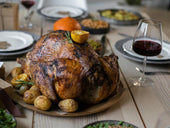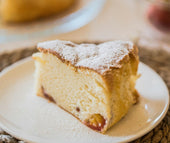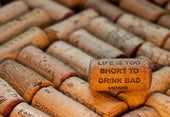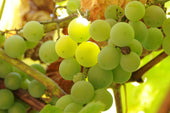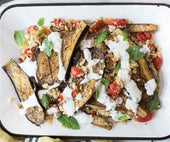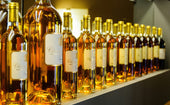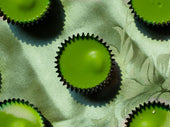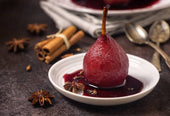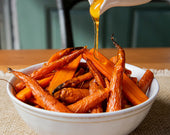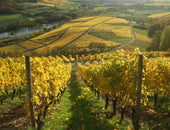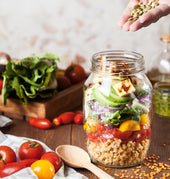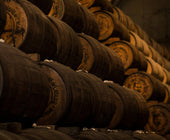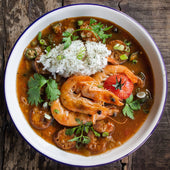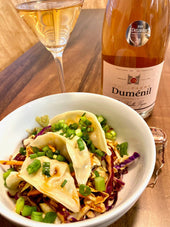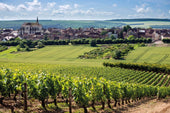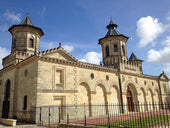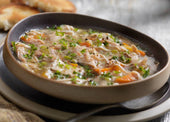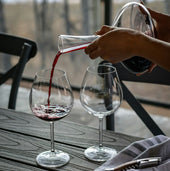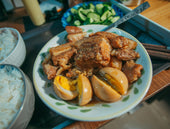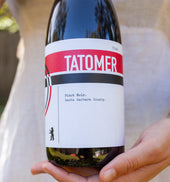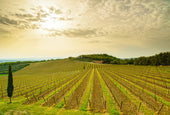
The Original Solar-Powered Hybrid: The Noble Vitis Vinifera

When travelers come to wine country, they are first greeted by neatly trellised vineyards repeating at various angles to the passing landscape. This topiary-like vision is not just for the delight of visitors. The method to this geometric madness originates from how a grapevine captures the sun’s energy.

Left to its own devices, the vitis vinifera, or wine grape, grows and vines with reckless abandon, climbing over anything in its path to reach blessed sunlight. From rootstock to tendril, the plant has many essential structures. These are nurtured, controlled, enhanced, or tamed by skilled growers through vineyard row direction, pruning, vine distances, irrigation and appropriate trellising. Each year’s growth prepares for the next two years’ fruit. And, it all begins at the rootstock.
Wine grapes are hybrid plants. New vineyards are planted with the varietal grape, or scion, pre-grafted in the nursery to rootstock selected to meet soil, moisture and disease-resistance requirements. Carbohydrates are stored in the rootstock when vines are dormant in winter. That energy fuels spring’s bud break and growth until the new leaves are capable of photosynthesis.
While newly planted vines take up to 3 years to fruit, established vineyards can be grafted to a new scion to better match conditions (or trends) with the loss of only one growing season.
The head of the grapevine is where the variations of trellising occur. Arms are often trained into cordones, the horizontal branches that grow along a trellis wire. During the growing season, 5-6 shoots of new growth burst forth from buds occurring at regular intervals on the cordone. A bud is actually a highly compressed shoot with all its parts — leaves, tendrils and flowers. The bud has a built-in redundancy of up to 3 shoots should the first one fail.
In the springtime, budbreak occurs when the sap rises (April/May in the Northern Hemisphere and September/October in the Southern Hemisphere). The first new leaves that emerge are very delicate and susceptible to frost and adverse weather such as hail and hard rain.
Following budbreak, there is a rapid acceleration of growth. As the shoots grow from the buds, 1-3 flower clusters appear opposite the leaves. (Shoots can grow as fast as an inch per day!) Tiny clinging tendrils reach out to grasp anything in their path – usually a trellis wire, but occasionally other parts of the plant. The tendrils are exceptionally strong and provide support for the combination of shoots, leaves, and tendrils that provide photosynthesis and physical shade for the grapes, called the canopy.
Flowering occurs about 6 weeks later, followed by self-pollination. The fertilized flower begins to develop seeds and grape berries to protect the seed, thus becoming a fruit cluster. Successful flowering in the vineyard determines the fruit set, or the density of grapes in the vineyard.
The canopy continues its wild growth while the hard and opaque-green berries enlarge and close-up to form a recognizable grape bunch. Throughout the summer, growers give constant attention to the canopy; shoots and leaves are lifted away from the fruit clusters and secured by wires, and leaves are removed or hedged to allow sunlight and airflow around the fruit in order to enhance ripening.
Then, the entire plant goes through a shift, switching from creating energy through photosynthesis to consuming energy by creating sugar in the grapes. This shift is called veraison, and it is signaled by a color change and softening of the grape berries. Ripening can take several weeks until the fruit has the desired sugar content, or brix, and is ready for harvest.
Post harvest in the fall, the shoots become woody and are termed canes. As the leaves wither and die, the remaining nutrients return to the rootstock and the plant becomes dormant.
In late winter, skilled pruning is required to select the best canes to enhance and control next year’s growth. Only year-old canes yield flowers and fruit, so they are the key to the next season’s success. After pruning to 4 buds or less, the short stub remaining is called a spur.
Each spur contains all of the elements needed for next year's fruit set — shoot, leaves, tendrils and flowers, plus the buds for the following year. It’s a big job for that little woody remnant. Fortunately, generations of growers have created an intricate superstructure to promote its success.
 Patty Lyn Tweten is a writer, graphic designer and vineyard owner. She is also a devoted fan of rosés having helped her husband make their own with the sagniée method. Instagram Linkedin
Patty Lyn Tweten is a writer, graphic designer and vineyard owner. She is also a devoted fan of rosés having helped her husband make their own with the sagniée method. Instagram Linkedin

